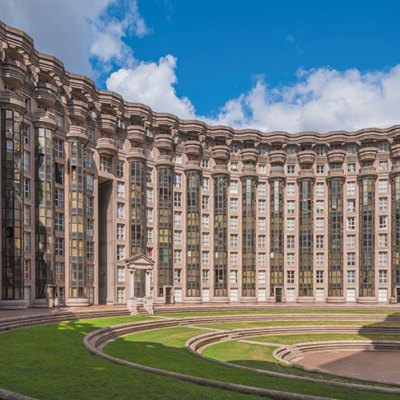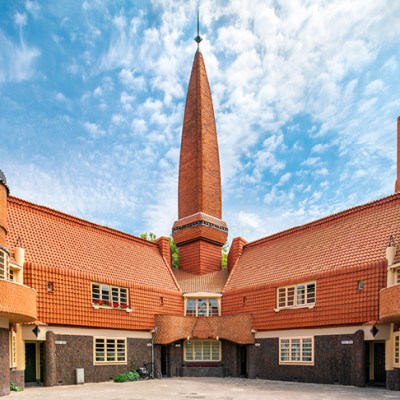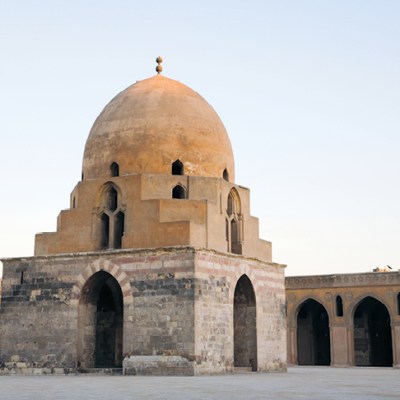In 2017 Asmara, the capital of Eritrea, was designated a UNESCO World Heritage site, a move that can be seen as the beginning of more hopeful times for the country. The following year Eritrea and Ethiopia, its much larger neighbour (from whom it had gained independence in 1993) signed a declaration ending a state of war that had existed since 1998; this was followed in the autumn by the opening of the mutual border and the lifting of UN sanctions against Eritrea.
The remarkable architectural heritage that earned Asmara this listing was largely the product of Italian imperialism. Until 1897, Asmara was a village; its fortunes were transformed when the Italian colonists decided to move their administrative capital inland from the Red Sea port of Massawa. At more than 2,300 metres above sea level, Asmara was a far cooler and healthier spot for European functionaries to develop as their centre. Colonial architects produced an extraordinary, eclectic range of Italianate architecture, inspired by home but incorporating local materials such as a red-black or grey-black stone that, pointed in white, gives a rough-hewn and cheerful finish to many of these early buildings. Brick was reserved for the most important and official buildings. The earliest church was in a Lombard style and the ambitious cathedral complex which replaced it in 1923 followed suit. Brick villas and offices for the water company took the Tuscan medieval for inspiration, with suitably Romanesque detailing. The Asmara Theatre (later a cinema), was designed in around 1919 by the engineer Odoardo Cavagnari, the leading planner of the new capital. Looking to the Florentine Renaissance, the building has a portico recalling the Ospedale degli Innocenti, which is approached by a pair of sweeping stairs leading up from the street through a terraced garden.
When younger architects began to aggrandise Asmara in the name of Mussolini from the late 1920s onwards, they were urged to change direction and look purposefully forward. The earlier buildings, loaded with decoration and a host of historical references, were followed by another generation of structures designed in a modernist idiom. Hotels, offices, villas and apartments were designed for the climate, with balconies and courtyards constructed of heavy concrete with arbitrary ornament and a wash of render. These are tough buildings, simply detailed and well-made, the earliest of which was the Casa del Fascio – now the Ministry of Education.
The extraordinary homogeneity of the central area of the town has been left largely undisturbed by the usual pressures of commercialisation, intrusive tourism and the rest; the dire legacy of Italian segregationist town planning also remains, spilling across the surrounding hillsides. No new construction has been allowed in the key historic district since 2001. The World Bank underwrote an important programme, the Cultural Assets Rehabilitation Programme (CARP), which ran from then until 2007; in those years, a wide programme of repair and upgrading of key buildings took place, as well as the intensive research that eventually led to UNESCO recognition. Twelve years later, both those who take direct responsibility for the old town’s buildings and those who offer help from the sidelines – notably Edward Denison who, with his wife Guang Yu Ren, worked on the archives for the submission to UNESCO and co-wrote a book on Asmara – hope for new political will and funding.
The Cinema Impero, Asmara, designed in 1937 by Mario Messina. Photo: the author

Meanwhile, some building types are still used for their original purposes. The Cinema Impero, designed in 1937 by Mario Messina, was originally intended to seat 1,800. It is still immense even in a more modest incarnation, and fills to capacity for streamed sporting events (football and cycling in particular). The cafes and bars, deco or modernist, are also little changed. Factories, on the other hand, have found new uses after the Italian automobile industry moved on, leaving a remarkable built legacy that ranges from the little Agip petrol station of 1937 (now owned by Shell), and the most famous modernist building in Eritrea, the Fiat Tagliero service station, designed by Giuseppe Pettazzi and completed in 1938.
These buildings may be tough, but many need care and maintenance. Pettazzi’s service station, which was renovated under the CARP programme, is again a sorry sight, isolated by a roundabout, disused and fading among weeds and broken paving. Conservation plans have been drawn up but there is no indication of when work might begin.
Asmara is not the only city that stands to benefit from the normalisation of relations with Ethiopia. The opening of the border suggested that Eritrea might provide the landlocked country with access to the coast; and a new focus fell upon the port of Massawa. In the early 20th century the Italians had connected it to Asmara by a railway line that offered a spectacular 12-hour journey. That line is now unused, except by a few steam-train enthusiasts, and the only direct link between the two towns is a three-hour mountain drive.
The Governor’s Palace in Massawa – built in 1872, later used by Haile Selassi as his winter residence, and badly damaged in 1990 during the Ethiopian bombardment of Eritrea. Photo: Andrew McConnell/Alamy Stock Photo

Massawa has long been moribund as a port, but its old town is a place of seductive, if dormant, beauty. The town’s radial street plan was ingeniously calibrated to take maximum advantage of any available breeze, with the narrow street blocks angled towards the open sea while also catching whatever shade might be found. Largely built from coral, on an island of which the town stands – the dominant vernacular architecture is a blend of the influences of past colonisers – the Ottomans, who ruled for 300 years, and the Egyptians, who were in charge from 1865 until the Italians arrived. Then and now the two towns are economically, religiously and physically very distant from one another. When the traveller James Bruce visited Massawa in 1769 he noted that although the governor was a Turkish appointment, all customs duties received were divided with the negus (monarch) of Abyssinia (as Ethiopia was known until the Second World War) in return for his protection.
Massawa lies in a tectonically active region. The most dramatic earthquake was in 1921, which prompted the Italian administration to propose total reconstruction. Fortunately, the wise counsel of local people prevailed, and both the plan and historic construction methods were retained in repair and reconstruction. Traditionally, the coral limestone blocks are sandwiched by timber, which is relatively shock-proof. But timber is now in very short supply in Eritrea, and recently concrete has replaced it, making the buildings more vulnerable. The old town may lack UNESCO recognition, but it is a candidate for serious and urgent attention.
From the September 2019 issue of Apollo. Preview and subscribe here.



